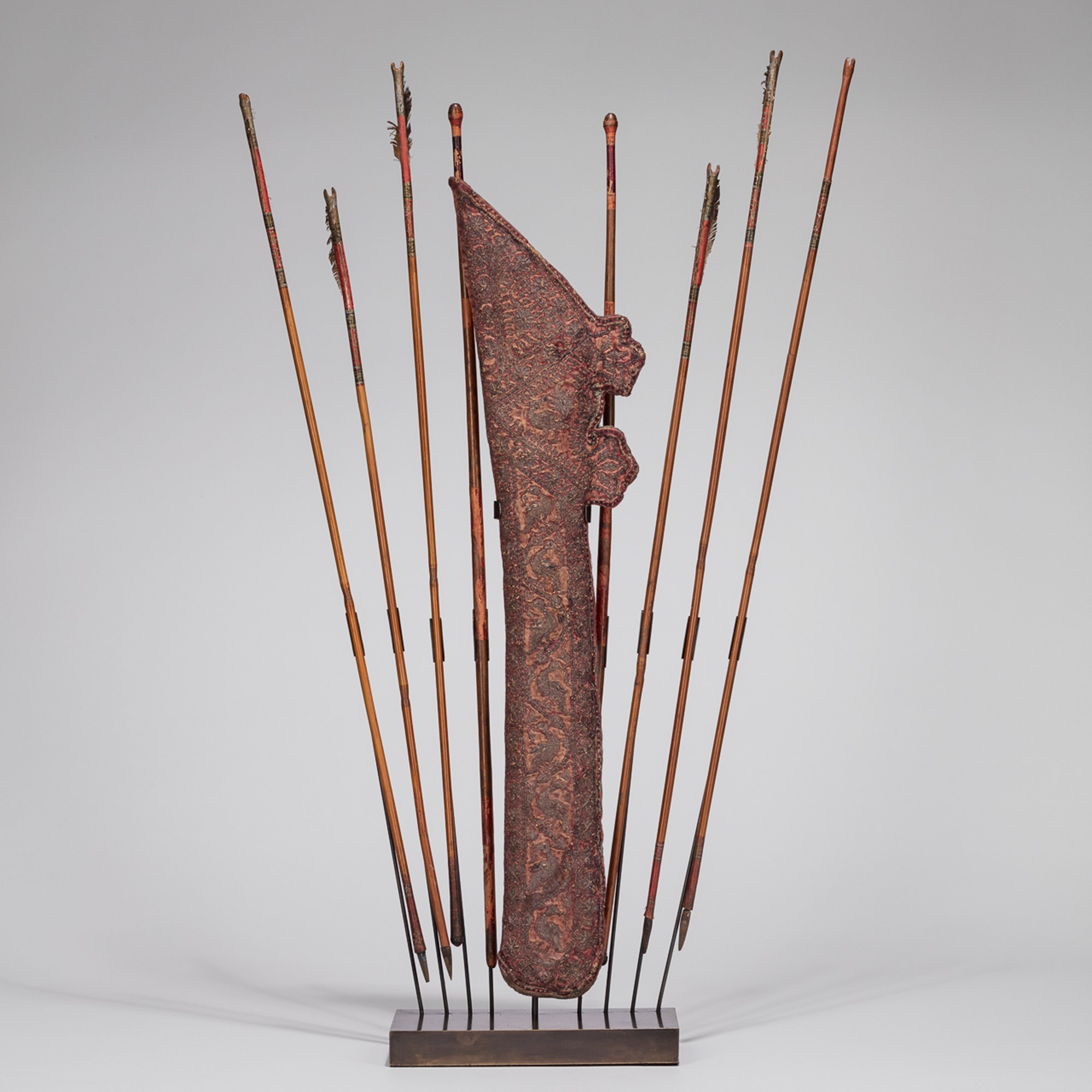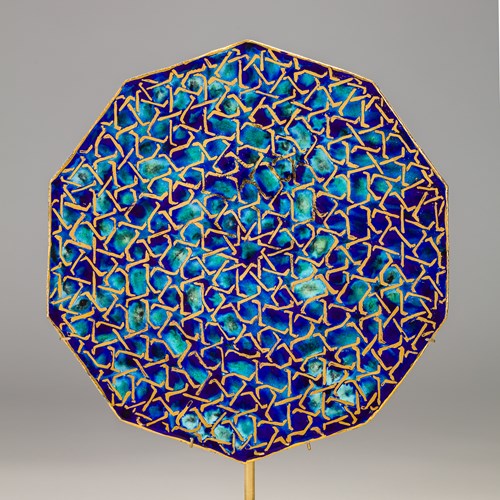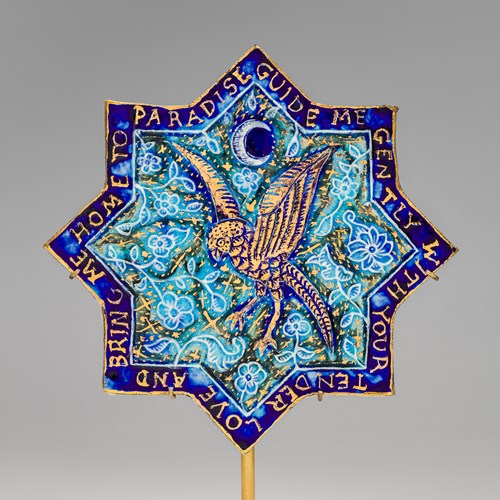Marketplace
Indian Quiver and Arrows
The leather body of the quiver is covered with red velvet, embroidered with floral and vegetal motifs in green silk thread. Down the centre of the quiver runs a column of peacocks, facing alternate directions, divided by scrolling foliage. Two suspension loops jut out from the side of the quiver, through which a cord would have been threaded to attach around the waist. The nine arrows are lacquered with red and green bands at both ends. They are made from reeds but painted to look like bamboo. They have nocked ends, on which much of the fletching remains. The arrow points are of steel, some blunt and some spear-like. A set of arrows with similar lacquer patterns which date to the 19th century is held in the Victoria & Albert Museum, London (accession no. 691E-1889).
Archery was commonly practised in Mughal India in both hunting and warfare, as illustrated in Mughal miniatures such as ‘The Battle of Shahbarghan’ from a 17th-century Padshahnama in the Metropolitan Museum of Art, New York (accession no. 1986.283). It depicts a group of mounted archers aiming at their opponents on the battlefield with quivers strung around the archers’ waists.
A series of similar embroidered Indian quivers is in the Victoria & Albert Museum, London (accession nos 3309:1/(IS), 889-1852, and 3437&A/1toA/4/(IS)). A related quiver, with floral decoration on red velvet, is illustrated in Splendeur des armes orientales (1988).1
n.b. accession nos are clickable links
1 Missillier, Philippe, and Howard Ricketts. Splendeur des armes orientales. Paris: ACTE-EXPO, 1988. Cat. 184, p. 109.
Plus d'œuvres d'art de la Galerie







, the 10th Susuhunan of Surakarta_T637044844156194560.jpg?width=500&height=500&mode=pad&scale=both&qlt=90&format=jpg)

